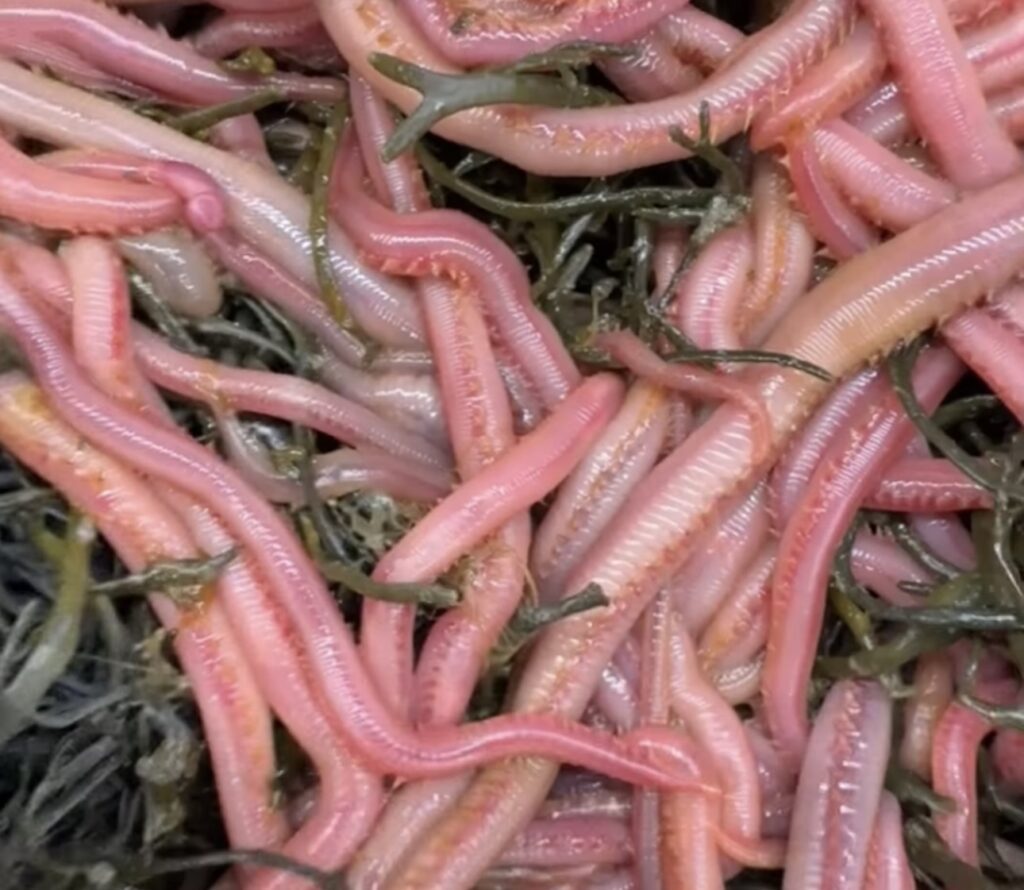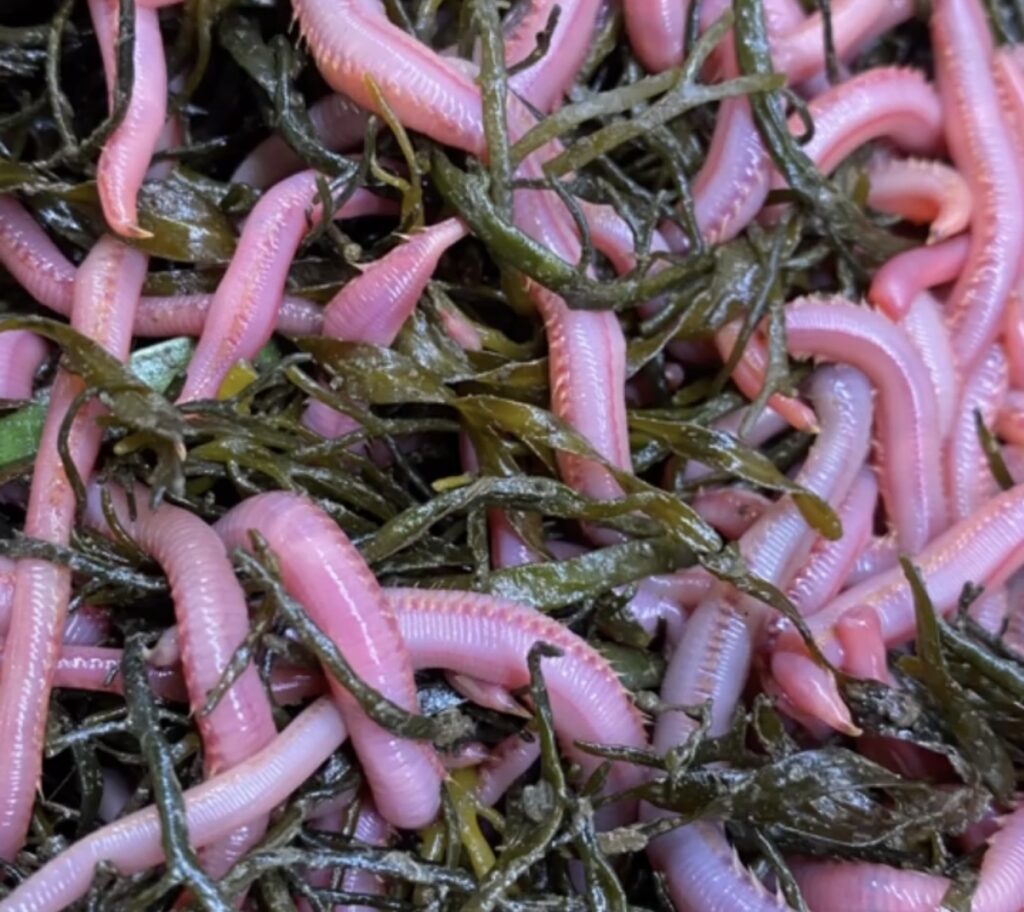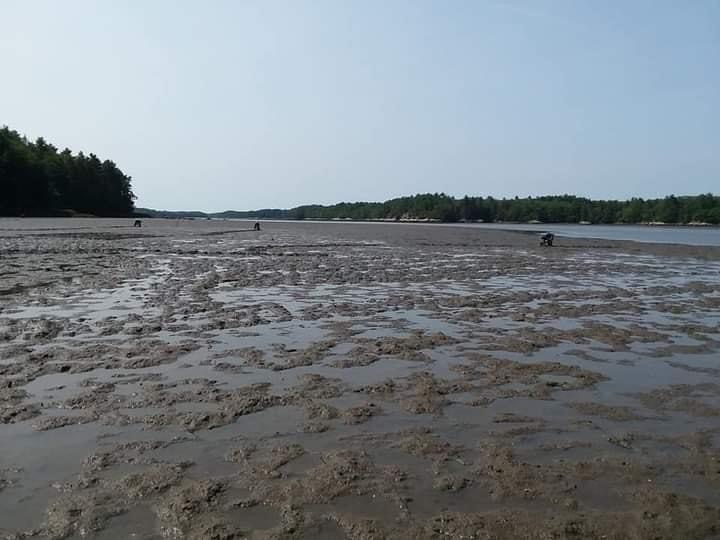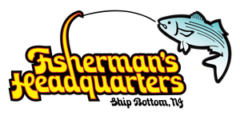There’s no better bait for early spring (March & April) striped bass fishing than large live bloodworms. As a matter of fact, bloodworms are a great bait for many different species and work great in other times of the season too. An angler would be hard pressed to find a species of fish that doesn’t eat bloodworms. These slender juicy baits are like candy to fish. They are easy to digest which makes them a cold water comfort food.
But as anglers know the quality large size bloodworms are expensive and at times hard to get. Let’s take a dive into the topic of bloodworms.
What Is A Bloodworm?
Glycera is the common name for a bloodworm, in the group of polychaetes (bristle worms), that are pink/pale red, blood filled worms. The bloodworms anglers are used to fishing are more specifically Glycera dibranchiata. These carnivorous marine worms have a shooting proboscis (extending tubular sucking mouth) with four fangs/jaws and venom.

Where Do The Baits Come From?
Bloodworms live in the mud tidal waters of Maine and the Canadian Maritime. The majority of bloodworms that bait and tackle shops sell are harvested in the state of Maine and sold through distributers to bait and tackle shops. Worm diggers gather worms working the tidal flats at low tide, using small hand rakes to over turn the mud. The worms are then hand picked one by one from the mud and put into a pail. Worm diggers sell to bait wholesalers that distributors to bait and tackle shops. Worm digging is a “Down East” generational way of life, but that is that’s changing. More on that later…
Storing & Caring For Bloodworms
Heat, humidity and direct sunlight is detrimental to bloodworms. They must be kept cold and moist. A cooler with ice is ok but don’t keep them on the ice. Bloods are best kept in a fridge at 36-40º, in a shallow wide dish/container with a splash of seawater (saltwater, but never salted tap water). Worms kept this way must be washed/rinsed one to two times daily. Yes it’s a hassle, but they can live a month or more if properly cared for. Try to handle as little as possible. White or washed out and especially hemorrhaging or dead worms must be culled and removed immediately. One dead worm can ruin the rest.
Bloodworms are commonly shipped and sold with worm-weed (sea weed, rockweed) and that is only used as a protective packaging material for transit and holding. They are usually happy in this bed for up to a week, but worm-weed is not necessary to their survival and damp newspaper will suffice. Remember bloodworms live in the mud, not sea weed.
Invasive species hitchhiking in the worm-weed from Maine can bring problems to other areas when anglers do not disposed of the weed properly.
Put in the trash!
Never toss into the water!
More On Bloodworms
Worm diggers are part of Maine’s coastal heritage, battling the harsh weather and working long hours. It’s concerning that the industry is fading. One worm wholesaler shared with me, “Right now we are the last generation in Maine. Most of us are older and there’s not much young blood getting involved in the bloodworm industry. On top of that, the harvest has not been great.”

Bloodworm Issues
Every angler in New Jersey knows that bloodworms are expensive baits and they are not always easy to get. Just like everything else in the world it comes down to supply and demand. But there are some other issues too.
Biological Sensitive
First off bloodworms are highly vulnerable species due to their biological sensitivity. They are also consistently inconsistent and cyclical like many other fisheries.
Weather & Tides
As with all fishing/harvesting the weather plays an important role. With regards to digging worms, the tide is very important. Lower tides during daylight hours offer good times to dig and flood tides during the day or high water for prolonged periods are poor. Bad cycles mean poor yield, resulting in shortages.
2024 was a rough one. It started off really bad for Maine. Two large, powerful, long duration storms crushed the state with heavy rain and powerful winds. The damage to coastal communities and the working waterfronts are still recovering and will take years to rebuild. How much of an effect this has on the availability of bloodworms is unknown. It surly didn’t help! So far 2025 has been better storm wise but the cold spring early did help.
Pollution
Pollution from runoff is a major issue for worms on the mudflats of Maine. There are many risks that worms face; water discharged from power generation facilities, sewage plant, treatment/water treatment facilities, chlorine discharge and runoff containing herbicide/pesticides. All of these and others have a negative impact on worms and worm larvae survival.
Climate Change
“In the past couple we’ve years seen the temperatures increase a couple degrees” a 60 year worm veteran shared. This document from NOAA outlines the risks and there sensitivity to climate change.
Habitat Destruction
Muscle dredging into the high water areas rips up the seed beds. If you destroy habitat, you can’t expect a fishery to exist. One digger shared, “There are many areas that use to produce, but these areas are now void of bloodworms. However there are other areas that were never any good and they are producing. Things change!”
In Conclusions
As we see, bloodworms face a complex set of issues.
The past couple of years the bloodworm bait business has been tricky. Fortunately we work closely with a few long term suppliers in order to keep the price and quality under control. Last year we reduced our margin to hold the retail price from further increased. We continue to hold the line in 2025 despite the elevated prices and inconsistent size batch to batch.
As a retail bait and tackle shop established in 1962 we strive to offer our customers the best baits, at the best prices.

A Maine mud flat at low tide with a few worm diggers working in the background.
